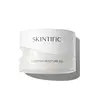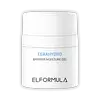What's inside
What's inside
 Key Ingredients
Key Ingredients

 Benefits
Benefits

 Concerns
Concerns

 Ingredients Side-by-side
Ingredients Side-by-side

Water
Skin ConditioningButylene Glycol
HumectantDiethoxyethyl Succinate
SolventSqualane
EmollientCetearyl Olivate
Sorbitan Olivate
EmulsifyingDimethicone
EmollientAmmonium Acryloyldimethyltaurate/Vp Copolymer
Hydroxyacetophenone
AntioxidantCetearyl Alcohol
EmollientCoco-Caprylate/Caprate
EmollientCyanocobalamin
Skin ConditioningLactobacillus/Milk Ferment Filtrate
Skin ConditioningPentylene Glycol
Skin ConditioningAcrylates/C10-30 Alkyl Acrylate Crosspolymer
Emulsion StabilisingBisabolol
MaskingPortulaca Oleracea Extract
Skin ConditioningCeramide Ns
Skin ConditioningSodium Hyaluronate
HumectantHydroxyphenyl Propamidobenzoic Acid
Skin ConditioningCentella Asiatica Extract
CleansingAsiaticoside
AntioxidantWater, Butylene Glycol, Diethoxyethyl Succinate, Squalane, Cetearyl Olivate, Sorbitan Olivate, Dimethicone, Ammonium Acryloyldimethyltaurate/Vp Copolymer, Hydroxyacetophenone, Cetearyl Alcohol, Coco-Caprylate/Caprate, Cyanocobalamin, Lactobacillus/Milk Ferment Filtrate, Pentylene Glycol, Acrylates/C10-30 Alkyl Acrylate Crosspolymer, Bisabolol, Portulaca Oleracea Extract, Ceramide Ns, Sodium Hyaluronate, Hydroxyphenyl Propamidobenzoic Acid, Centella Asiatica Extract, Asiaticoside
Water
Skin ConditioningButylene Glycol
HumectantGlycerin
HumectantIsononyl Isononanoate
EmollientCaprylic/Capric Triglyceride
MaskingIsododecane
EmollientCyclopentasiloxane
Emollient1,2-Hexanediol
Skin ConditioningHydroxyacetophenone
AntioxidantCetearyl Alcohol
EmollientDiglycerin
HumectantCarbomer
Emulsion StabilisingPolysorbate 80
EmulsifyingTriethanolamine
BufferingEctoin
Skin ConditioningPropylene Glycol
HumectantSodium Polyglutamate
HumectantSorbitan Oleate
EmulsifyingBisabolol
MaskingSodium Hyaluronate
HumectantCentella Asiatica Extract
CleansingPropanediol
SolventGlucose
HumectantHydrogenated Lecithin
EmulsifyingPolygonum Cuspidatum Root Extract
AntioxidantScutellaria Baicalensis Root Extract
AstringentHexylene Glycol
EmulsifyingStearic Acid
CleansingCholesterol
EmollientCeramide NP
Skin ConditioningCamellia Sinensis Leaf Extract
AntimicrobialGlycyrrhiza Glabra Root Extract
BleachingBeta-Glucan
Skin ConditioningChamomilla Recutita Flower Extract
MaskingRosmarinus Officinalis Leaf Extract
AntimicrobialLespedeza Capitata Leaf/Stem Extract
Skin ConditioningAvena Sativa Kernel Extract
AbrasiveZingiber Officinale Root Extract
MaskingWater, Butylene Glycol, Glycerin, Isononyl Isononanoate, Caprylic/Capric Triglyceride, Isododecane, Cyclopentasiloxane, 1,2-Hexanediol, Hydroxyacetophenone, Cetearyl Alcohol, Diglycerin, Carbomer, Polysorbate 80, Triethanolamine, Ectoin, Propylene Glycol, Sodium Polyglutamate, Sorbitan Oleate, Bisabolol, Sodium Hyaluronate, Centella Asiatica Extract, Propanediol, Glucose, Hydrogenated Lecithin, Polygonum Cuspidatum Root Extract, Scutellaria Baicalensis Root Extract, Hexylene Glycol, Stearic Acid, Cholesterol, Ceramide NP, Camellia Sinensis Leaf Extract, Glycyrrhiza Glabra Root Extract, Beta-Glucan, Chamomilla Recutita Flower Extract, Rosmarinus Officinalis Leaf Extract, Lespedeza Capitata Leaf/Stem Extract, Avena Sativa Kernel Extract, Zingiber Officinale Root Extract
 Reviews
Reviews

Ingredients Explained
These ingredients are found in both products.
Ingredients higher up in an ingredient list are typically present in a larger amount.
Bisabolol is famous for its skin soothing properties. It does this by blocking inflammatory signals, helping to reduce your body's reaction to irritation.
This ingredient also interferes with the process of hyperpigmentation. This can help with reducing dark spots and uneven tone.
Bisabolol is an antioxidant. Antioxidants help fight free-radicals. Free-radicals are molecules that may damage your skin cells. By fighting these free-radicals, Bisabolol may slow down signs of aging.
Studies have shown Bisabolol to have antimicrobial properties and may be a fungicide. These properties help preserve a product's shelf life.
All these properties makes bisabolol a great skin barrier helper ingredient.
Bisabolol also helps the absorption of other ingredients.
Note: Synthetic Bisabolol has been shown to be less effective.
Learn more about BisabololButylene Glycol (or BG) is used within cosmetic products for a few different reasons:
Overall, Butylene Glycol is a safe and well-rounded ingredient that works well with other ingredients.
Though this ingredient works well with most skin types, some people with sensitive skin may experience a reaction such as allergic rashes, closed comedones, or itchiness.
Learn more about Butylene GlycolCentella Asiatica Extract (Centella) is derived from an herb native to Southeast Asia. It is famous for its anti-inflammatory and soothing properties.
Centella is rich in antioxidants and amino acids, such as Madecassic Acid and Asiaticoside.
Studies show the compounds in centella help with:
The combination of all these properties makes centella effective at soothing, hydrating, and protecting the skin.
Other great components of centella include Vitamin A, vitamin C, several B vitamins, and Asiatic Acid.
Fun fact: Centella has been used as a medicine and in food for many centuries. As a medicine, it is used to treat burns, scratches, and wounds.
Learn more about Centella Asiatica ExtractCetearyl alcohol is a mixture of two fatty alcohols: cetyl alcohol and stearyl alcohol. It is mainly used as an emulsifier. Emulsifiers help prevent the separation of oils and products. Due to its composition, it can also be used to thicken a product or help create foam.
Cetearyl alcohol is an emollient. Emollients help soothe and hydrate the skin by trapping moisture.
Studies show Cetearyl alcohol is non-toxic and non-irritating. The FDA allows products labeled "alcohol-free" to have fatty alcohols.
This ingredient is usually derived from plant oils such as palm, vegetable, or coconut oils. There is debate on whether this ingredient will cause acne.
Due to the fatty acid base, this ingredient may not be Malassezia folliculitis safe.
Learn more about Cetearyl AlcoholHydroxyacetophenone is antioxidant with skin conditioning and soothing properties. It also boosts the efficiency of preservatives.
This ingredient is not irritating or sensitizing.
Sodium Hyaluronate is hyaluronic acid's salt form. It is commonly derived from the sodium salt of hyaluronic acid.
Like hyaluronic acid, it is great at holding water and acts as a humectant. This makes it a great skin hydrating ingredient.
Sodium Hyaluronate is naturally occurring in our bodies and is mostly found in eye fluid and joints.
These are some other common types of Hyaluronic Acid:
Learn more about Sodium HyaluronateWater. It's the most common cosmetic ingredient of all. You'll usually see it at the top of ingredient lists, meaning that it makes up the largest part of the product.
So why is it so popular? Water most often acts as a solvent - this means that it helps dissolve other ingredients into the formulation.
You'll also recognize water as that liquid we all need to stay alive. If you see this, drink a glass of water. Stay hydrated!
Learn more about Water